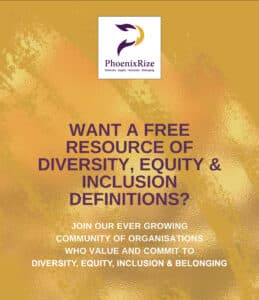Why fighting bias matters
One year into the pandemic, we’re in a moment of crisis for women. Millions of women have been driven out of the workforce by Covid-19. Many more are struggling with burnout and considering downshifting their careers or leaving their jobs.
To avoid unwinding years of progress toward gender equality, companies need to act now to promote, hire, and retain women. Combating the biases women face at work is critical to getting this right. Research shows that bias contributes to women being passed over for jobs and promotions. Almost three in four women experience bias at work, and those who do are more likely to leave their jobs. And women of color, LGBTQ+ women, and women with disabilities face more acute biases. Yet only one in three employees, including managers, challenges biased behavior when they see it.
Knowing that bias exists isn’t enough. We need to take action—and Lean In’s 50 Ways to Fight Bias program can help.
50 Ways to Fight Bias is a free digital program to empower all employees to identify and challenge bias head on. The program is optimized for virtual workshops and consists of two parts: a short video that explains the most common types of biases that women face and a digital card activity where small groups of participants discuss specific examples of bias, brainstorm solutions together, and learn research-backed recommendations for what to do. The digital cards highlight almost 100 instances of workplace bias, including the compounding biases women experience because of their race, sexual orientation, disability, or other aspects of their identity.
50 Ways to Fight Bias has been used by thousands of organizations, including Amazon, PayPal, Walmart, and the Wharton MBA Program. And it works: 95% of program participants are more committed to challenging bias, and 96% of managers feel better equipped to talk about bias with their teams.
WHAT MAKES 50 WAYS TO FIGHT BIAS EFFECTIVE
Specific and interactive:
The program is rooted in very specific examples of workplace bias because research shows bias training is more effective when it’s tied to realistic and familiar situations, as opposed to more general concepts.
Rooted in intersectional research:
Grounded in decades of research and developed in collaboration with experts on how bias based on gender, race, sexual orientation, disability, and religion impacts people’s experiences at work.
Tailored to suit your organization’s needs:
You can choose from one of 12 sets of digital cards curated for different audiences and workplace interactions—for example, we offer a set for managers and a set focused on bias in hiring and promotions.
Designed to engage men:
Many bias trainings leave men feeling attacked or alienated. 50 Ways is designed to help men play a meaningful role in identifying and combating bias.
How it works
50 Ways is optimized for virtual workshops where participants learn about bias, discuss specific examples, and get expert recommendations on what to do. Here’s how the program works in a few simple steps—and you can explore our digital program to learn more.
1- Set the tone
All 50 Ways workshops begin by level setting with participants on how to encourage an open and respectful discussion.
2- Introduction to bias
Participants watch a short video that explains the most common types of biases that women face as well as the concept of intersectionality—how women can experience compounding biases due to other aspects of their identity.
3- Group activity
Before the workshop, the moderator selects the set of digital cards that will resonate with participants. In the session, participants break into small groups to go through the cards together. On each card, they’re introduced to a specific example of bias—and why it matters.
They take a few minutes to discuss the situation and brainstorm solutions for interrupting the bias. They then learn what experts recommend they do in that situation, along with a short explanation of what’s behind the bias.
4- Commit to action
As the activity wraps up, participants commit to take One Action to fight bias based on what they’ve learned.

